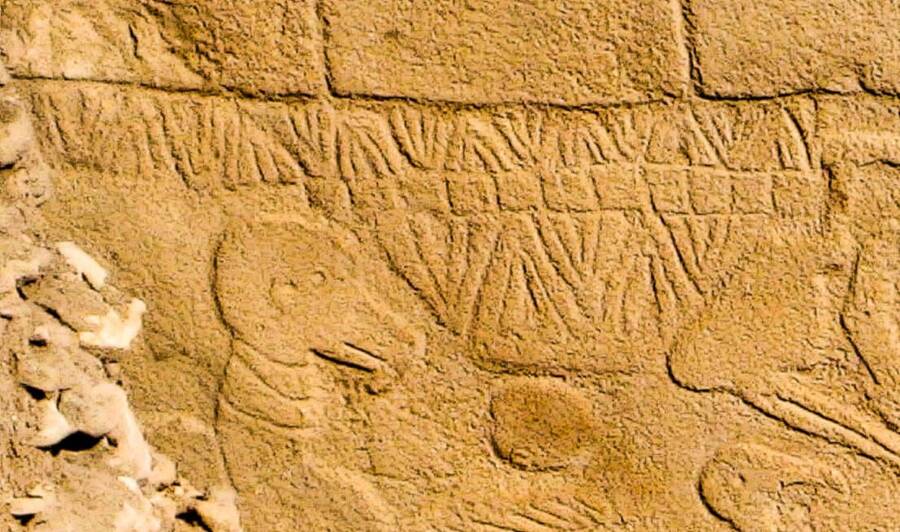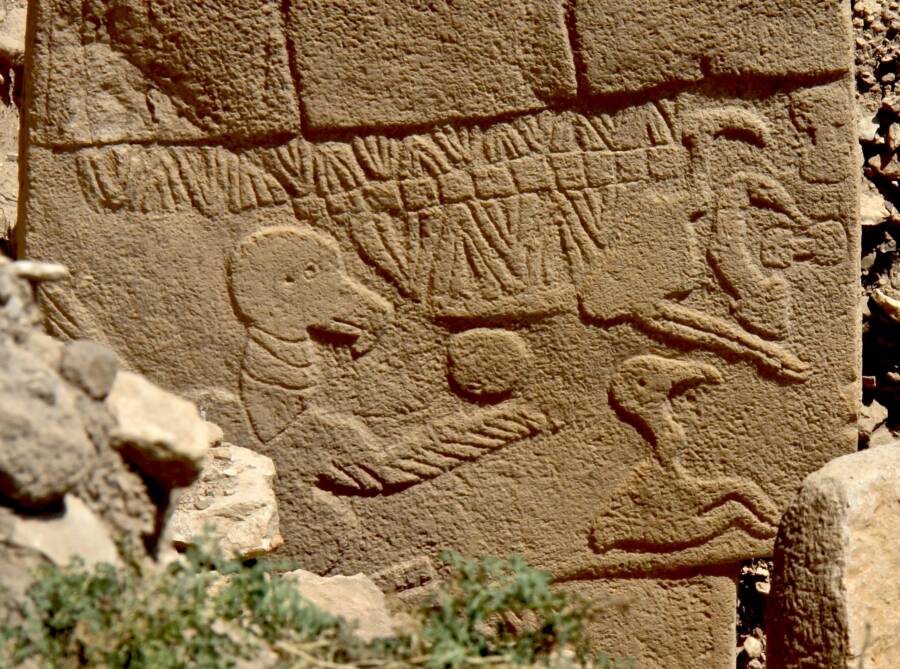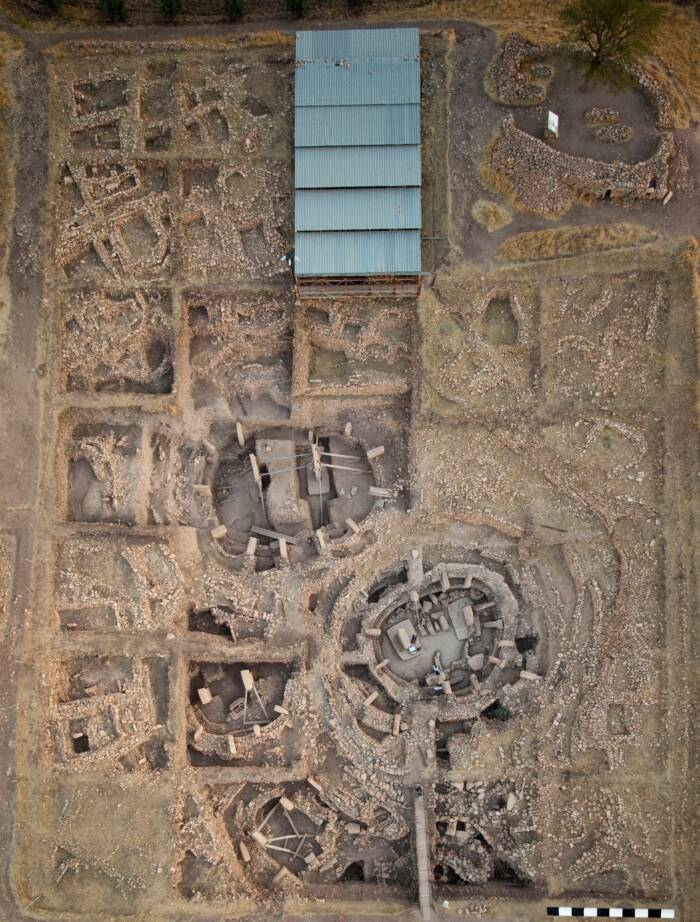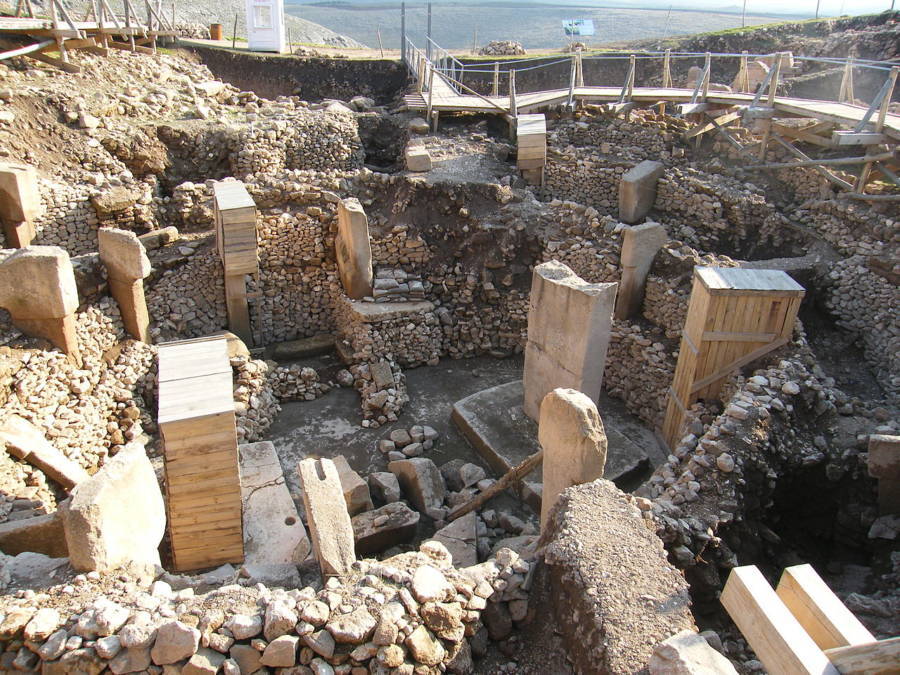The creation of what could be history's first lunisolar calendar may have come in response to a series of comet strikes that devastated Earth some 13,000 years ago.

Martin SweatmanWhat’s believed to be the world’s oldest lunisolar calendar is made up of V-sharped markings, with one special V for the summer solstice.
Göbekli Tepe, located in southeastern Türkiye, is widely considered to be the oldest temple in the world. And because its significance was only first documented in 1994, researchers are still unraveling its secrets today.
Now, a groundbreaking study has focused on a series of roughly 12,000-year-old carvings found at the site, which researchers believe may be the oldest lunisolar calendar ever discovered.
Not only that, but the calendar might have been created in the aftermath of a devastating comet strike which would have changed the ancient world.
What May Be The World’s Oldest Lunisolar Calendar Is Uncovered At Göbekli Tepe

Wikimedia CommonsResearchers believe that a series of V-shaped markings represent the days of the year, divided into 12 lunar months, making this the oldest lunisolar calendar in the world.
According to a new study published in the journal Time and Mind, researchers focused their study on an intricately carved pillar at the Göbekli Tepe archaeological site. The pillar is covered with V-shaped carvings, and researchers believe that each V could represent a single day.
“This interpretation allowed researchers to count a solar calendar of 365 days on one of the pillars, consisting of 12 lunar months plus 11 extra days,” a statement from the University of Edinburgh explained.
Significantly, the summer solstice seems to be represented as a “separate, special day.” It’s shown as a V worn around the neck of a “bird-like beast” which researchers believe represented summer solstice constellations. They’ve documented a similar motif on other statues at Göbekli Tepe.

German Archaeological Institute/Wikimedia CommonsGöbekli Tepe as seen from above. 2019.
Researchers suspect that the carvings, which depict both lunar and solar cycles, represent a lunisolar calendar. If so, it would represent the oldest lunisolar calendar ever discovered, predating others by thousands of years.
What’s more, researchers believe that the calendar was a reaction by ancient people to a catastrophe that occurred some 13,000 years ago.
The Cataclysmic Comet Strike Behind This Supposed Lunisolar Calendar
As the University of Edinburgh statement notes, the lunisolar calendar at Göbekli Tepe may have been created in the aftermath of a comet strike that devastated Earth some 13,000 years ago, around 10,850 B.C.E.
“It appears the inhabitants of Göbekli Tepe were keen observers of the sky, which is to be expected given their world had been devastated by a comet strike,” Martin Sweatmen, the study’s author, explained.
The comet strike likely radically altered the world that ancient people lived in. Not only did it probably usher in a “mini ice age” which lasted roughly 1,200 years, but it also led to the extinction of many large animals.

Beytullah eles/Wikimedia CommonsResearchers are still unraveling the secrets of Göbekli Tepe, seen here in 2019.
“This event might have triggered civilization by initiating a new religion and by motivating developments in agriculture to cope with the cold climate,” Sweatman explained. “Possibly, their attempts to record what they saw are the first steps towards the development of writing millennia later.”
The study of the lunisolar calendar stands as just the latest exciting discovery from Göbekli Tepe, perhaps the oldest temple in the world.
Göbekli Tepe: The “Oldest Temple In The World”
First noted in a survey in 1963 and then thoroughly documented in 1994, Göbekli Tepe is widely considered the oldest temple ever discovered and certainly stands among the oldest structures in the world. It was probably built at least 12,000 years ago, thousands of years before the construction of Stonehenge or the invention of writing.

Wikimedia CommonsThe Göbekli Tepe archaeological site, as seen in 2012.
Because archaeologists haven’t found evidence of trash pits, cooking hearths, or homes, they suspect that it was a landmark or some kind of meeting place for hunter-gatherers. The numerous carvings at the site might represent humankind’s first attempts at creating an organized religion.
For now, many mysteries about Göbekli Tepe remain. But the possible discovery of this lunisolar calendar, carved thousands of years ago on one of its pillars, offers an evocative look at how our ancient ancestors interpreted the world around them, from things they could comprehend, like the passage of time, to thinks they couldn’t — like comet strikes.
After reading about the possible lunisolar calendar discovered at Göbekli Tepe, look through these perplexing ancient mysteries that historians still haven’t solved. Then, discover the stories behind the seven wonders of the ancient world.





